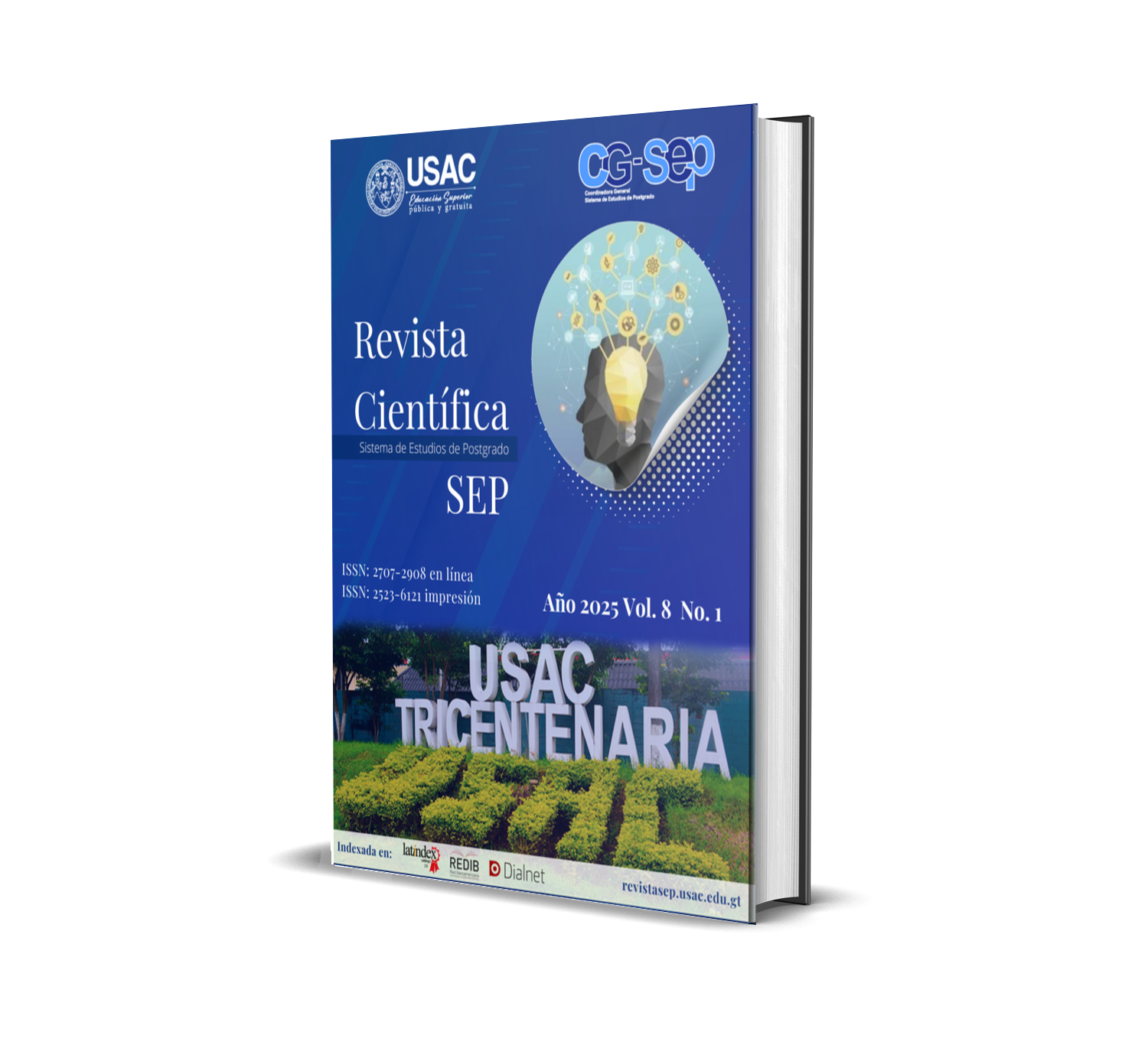Digital Gobernance in Guatemala
DOI:
https://doi.org/10.36958/sep.v8i1.339Keywords:
governance, digital governance, government, technologyAbstract
OBJECTIVE: to demonstrate the current importance of digital governance in Guatemala, given global technological and scientific advances, and its potential. Since the first Internet access in Guatemala in 1991, technological advances have permeated virtually every aspect of daily life. For this reason, now that digital resources have multiplied, it is important to make better use of them. Through a brief historical review, we will show the current state of governance in Guatemala and the expectations it presents. METHOD: it was a descriptive and exploratory approach, and the methodology used is the collection and analysis of documentary information, as well as on-site observations in institutions where digital governance is discussed. The bibliographic search was based on documents produced by prominent external sources, such as ECLAC and the final documents of the World Summit on the Information Society, as well as Guatemalan government sources. The selection and exclusion criteria were based on external sources that conceptually define digital governance and internal sources that support the concept for practice. RESULTS: the authors’ most discussed focus is on achieving greater effectiveness and transparency of the State in the provision of services and saving resources; they also emphasized that digital governance is an imperative that Guatemala cannot ignore. CONCLUSIONS: The State of Guatemala must invest in technological infrastructure, develop inclusive policies, and improve digital culture to generate transparency.
Downloads
References
A. Nasser, (. (2021). Gobernanza digital e interoperabilidad gubernamental: una guía para su implementación. CEPAL. Santiago, Comisión Económica para América Latina y el Caribe (CEPAL): Documentos de Proyectos (LC/TS.2021/80).
https://biblioguias.cepal.org/gobierno-digital
Banco Interamericano de Desarrollo. (2022). Guía de Transformación digital del Gobierno. BID.
Centro de Investigaciones Económicas Nacionales. (2024). Mejores Prácticas de Gobernanza e Institucionalidad para la Transformación Digital. Guatemala: CIEN.
Comisión Presidencial de Gestión Pública Abierta y Transparencia. (s/f). Antecedentes del Gobierno Electrónico en Guatemala. Comisión Presidencial de Gestión Pública Abierta y Transparencia. Guatemala: Comisión Presidencial de Gestión Pública Abierta y Transparencia. Obtenido de https://transparencia.gob.gt/wp-content/uploads/2019/07/DGBOE_Compromiso8Hito2_Antecedentes-Gobierno-Electr%C3%B3nico.pdf
Congreso de la República de Guatemala. (1985). Constitución Política de la República de Guatemala. Guatemala: Congreso de la República de Guatemala.
Congreso de la República de Guatemala. (2008). Ley de Acceso a la Información Pública. Guatemala: Congreso de la República de Guatemala.
Congreso de la República de Guatemala. (2021). Ley para la simplificación de requisitos y trámites administrativos. Guatemala: Congreso de la República de Guatemala.
Development, U. S. (2024). Proyecto de Fortalecimiento de Instituciones Nacionales. Guatemala: USAID.
Digital, R. c. (18 de Septiembre de 2024). Transformación Digital en Guatemala. Obtenido de Red ciudadanagobierno digital: https://gobiernodigital.redciudadana.org/foro/transformaci%C3%B3n-digital-en-guatemala/#:~:text=El%20Contexto%20de%20la%20Transformaci%C3%B3n,coordinaci%C3%B3n%20entre%20las%20instituciones%20p%C3%BAblicas.
Gobierno de Guatemala. (2021). Plan de Gobierno Digital. Guatemala: Comisión Presidencial de Gobierno Abierto y Electrónico.
Gobierno de Guatemala. (2023). Gobernanza Digital para el Desarrollo. Lima, Perú: Olacefs.
Instituto Nacional de Estadística. (21 de Agosto de 2024). El INE presenta cifras de pobreza en Guatemala. Obtenido de Instituto Nacional de Estadística: https://www.ine.gob.gt/2024/08/21/el-ine-presenta-cifras-de-pobreza-en-guatemala/
Juárez, P. (16 de mayo de 2019). Día Mundial del Internet: Así llegó la conectividad a Guatemala. Prensa Libre.
Unión Internacional de Telecomunicaciones. (2005). Cumbre Mundial sobre la Sociedad de la Información, documentos finales. Ginebra: Unión Internacional de Comunicaciones.
Published
How to Cite
Issue
Section
License
Copyright (c) 2025 Jorge Giovanni Castellanos Gudiel

This work is licensed under a Creative Commons Attribution 4.0 International License.
The authors who publish in this journal accept the following conditions:
- The authors retain the copyright and assign to the journal the right of the first publication, with the work registered with the Creative Commons 4.0 attribution license, which allows third parties to use what is published as long as they mention the authorship of the work already the first publication in this magazine.
- Authors may make other independent and additional contractual agreements for the non-exclusive distribution of the version of the article published in this journal (eg, include it in an institutional repository or publish it in a book) provided that they clearly indicate that the work it was first published in this magazine.
- Authors are allowed and encouraged to share their work online (for example: in institutional repositories or personal web pages) before and during the manuscript submission process, as it can lead to productive exchanges, more and more quick citation of published work (see The Effect of Open Access).









